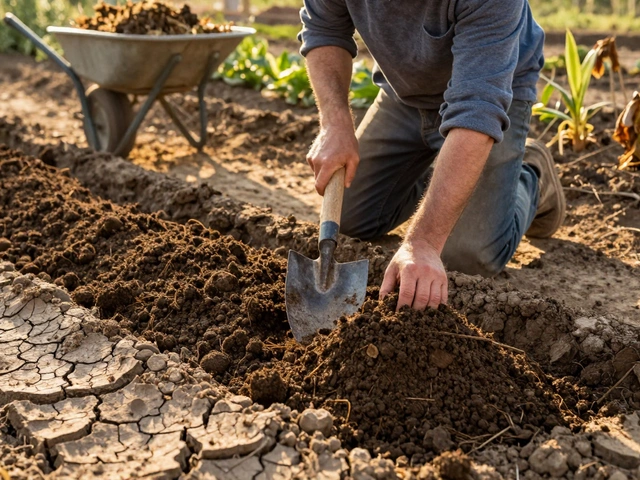Fruit Peels: Simple Ways to Reuse Kitchen Waste
Ever look at a pile of fruit peels and think they’re just trash? They’re actually a tiny gold mine for gardeners and home cooks. By giving those peels a second life, you cut waste, save money, and give your garden a natural boost.
Turn Fruit Peels into Compost
Composting fruit peels is as easy as tossing them into a bin. Their high nitrogen content speeds up the breakdown process, especially when you mix them with carbon‑rich materials like dry leaves or shredded newspaper. Remember to chop peels into small pieces – that helps microbes work faster and reduces any smell.
Banana peels are a favourite among gardeners because they release potassium, magnesium, and calcium as they decompose. Sprinkle chopped banana skins around tomato or rose plants for a slow‑release fertilizer. Citrus peels (orange, lemon, lime) can be a bit acidic, so balance them with plenty of brown material if you’re composting a lot of them.If you don’t have a full‑size compost bin, a simple kitchen bucket with a lid works too. Add a layer of peels, cover with a thin layer of soil, and stir every few days. In a few weeks you’ll have dark, crumbly compost ready to enrich your garden beds.
Cooking and Cleaning Hacks with Fruit Peels
Fruit peels aren’t just for soil – they can add flavor and shine to your home. Simmer citrus peels in water with a splash of vinegar to create an all‑natural cleaner that cuts grease and leaves a fresh scent. Use the same solution to wipe kitchen surfaces or shine copper pots.
Peel the skins off apples or pears, dry them in a low oven, and you have a tasty snack or a chewable treat for pets. Orange zest adds a bright punch to salads, desserts, and marinades; simply grate the outer layer and store it in a sealed jar.
For a quick garden pest repellent, scatter fresh lemon or orange peels around plants that attract aphids or ants. The strong scent confuses the insects and keeps them away without chemicals. If you have a lot of citrus waste, dry the peels, grind them into powder, and sprinkle the powder around seedlings as a natural deterrent.
Banana peels also double as a plant protectant. Place a strip of banana skin on the base of a tomato plant to deter aphids, or rub the inner side on rose thorns to reduce splinters. The skin’s natural sugars attract beneficial microbes that improve soil health.
Finally, don’t forget fruit peels for homemade broth. Toss orange, lemon, or apple peels into a pot of water with a few herbs, simmer for 20 minutes, and strain. The resulting liquid makes a great base for soups or a nutritious plant‑watering rinse.
Next time you peel a fruit, pause before tossing the skins away. A few simple steps can turn that waste into garden gold, kitchen cleaners, tasty treats, and pest‑free protectors. The extra effort is tiny, the benefits are huge – and your garden will thank you.
Zero-Waste Fruits: Edible Fruits with No Waste and How to Use Every Part
Discover which fruits produce no waste, how to use every part, expert tips for sustainable eating, and new ways to enjoy fruit peels and seeds you probably throw away.
About
Sustainable Gardening
Latest Posts


Rare Flowers Found Only in India: Unveiling the Subcontinent's Unique Blooms
By Alden Thorne Jul 7, 2025

How Often Should You Oil Your Terrace? A Practical Guide for Lasting Wood Protection
By Alden Thorne Nov 16, 2025

Where Does Ryobi Rank in Garden Tools?
By Alden Thorne Apr 5, 2025

